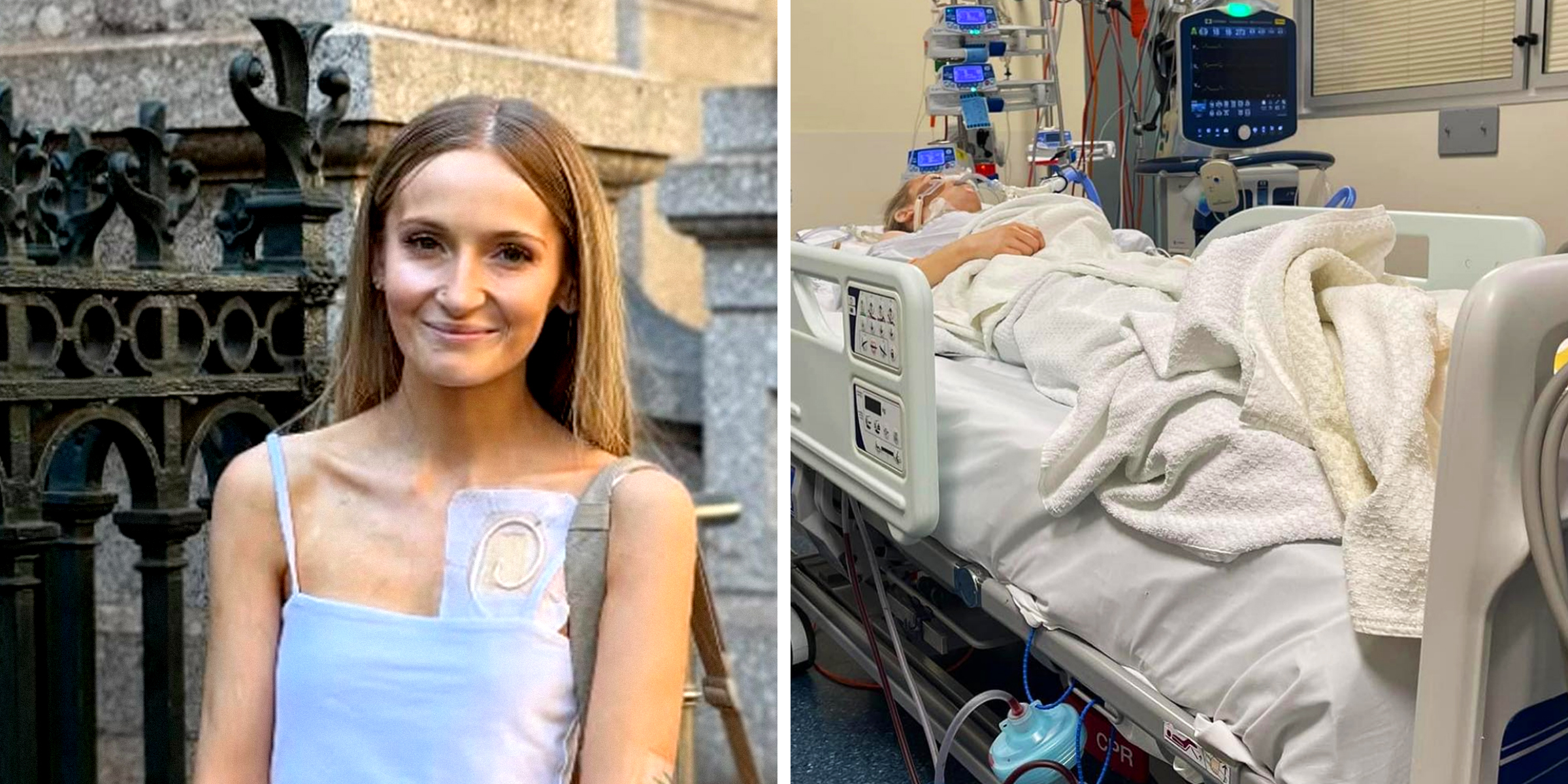
25-Year-Old Woman Chooses Medically Assisted Death After a Lifetime of Rare, Debilitating Illness
A dying young Australian woman has made the agonizing, controversial choice to end her life through medically assisted death, clinging to the one shred of control left after a lifetime of torment and despair.
Annaliese "Annie" Holland, just 25 and from South Australia, was granted permission to die after years of unrelenting decline, she revealed in a raw and devastating News.com.au interview published November 17, 2025.
Her approval, a result of brutal symptoms, near-death emergencies, and the paralyzing fear of one final, drawn-out horror, lays bare the emotional devastation, ethical turmoil, and heartbreak facing families forced to decide when pain has pushed a life past the point of no return.
Her Body Turned Against Her
The young woman, who has spent more time in hospital wards than schoolyards, now joins roughly 2,400 other Australians who have chosen this path, a final step after years of battling illnesses that refused to let go.
Annie's nightmare began when she was just 12 or 13, initially blamed on endometriosis. Doctors were convinced that was the root of it all. But then came glandular fever, and then, crushing chronic fatigue that drained her life away.
It wasn't until she was transferred to an adult hospital that the terrifying truth came out — her own body was attacking itself.
She was diagnosed with Autoimmune Autonomic Ganglionopathy (AAG), a rare and brutal disorder that targets the body's autopilot system. Bit by bit, the nerves controlling her heart rate, blood pressure, digestion, and even the ability to pee, began to break down.
The condition isn't always fatal if caught early. But in Annie's case, the diagnosis came so late that even the treatments became dangerous.
The Treatments Led to More Problems
Now, she is in multi-organ failure, her body shutting down because the nerves meant to control her bowel movements have stopped working. This has created catastrophic complications, leaving her unable to digest food or properly expel waste.
She was eventually placed on total parenteral nutrition, known as TPN, an intravenous lifeline that delivers every nutrient straight into her bloodstream and completely bypasses her gastrointestinal tract.
"At night I am fed with a drip for like 12 hours and I get my fluids the same way to stay hydrated," Annie revealed. She has relied on TPN for ten years, but it is no salvation at all. It carries a constant threat of infection that can rapidly spiral into sepsis.
This young woman has endured sepsis 25 terrifying times already, each episode forcing doctors to remove her TPN line. And the body has only a limited number of large veins that can safely handle such a device.
"I have lost so many now that this current line is my last line left for nutrition so if I lose this then I will die of malnutrition," she continued. "There's no other way to get me food or fluid that I can tolerate. I don't want to starve to death."
Bones Shattered, Spine Fractured, and Still She Fought
Tragically, the horrors of her condition don't stop there. Steroids, a major part of her treatment, came with devastating side effects, including severe osteoporosis.
Her bones became so fragile that she fractured her spine in several places and even suffered a broken sternum after dozing off on a hospital railing for just a few minutes.
Doctors told her there was nothing more they could do. Her spine couldn't be fixed because her bones were too weak to support any kind of surgery.
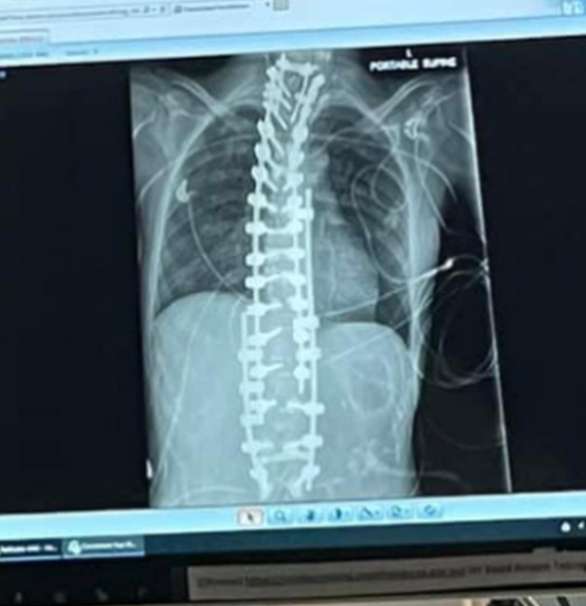
An x-ray of Annaliese "Annie" Holland's spine, from a post dated September 27, 2023 | Source: Instagram/annaliese_holland
But Annie wasn't ready to give up. With unshakable determination, she scoured the internet and found a doctor who specialized in operating on elderly women with osteoporosis.
It was a last-ditch gamble, but they had no choice, as her spinal cord was just one fracture away from snapping completely. She endured a brutal 13-hour surgery, fell into a coma for five days, and spent two months recovering in the hospital.
In the end, it was worthwhile, as she got to have a straight back. But the steroids took yet another cruel toll. They caused necrosis, cutting off blood flow to her bones.
Her teeth began to blacken and fall out. She also suffered agonizing tooth infections, all while clinging to what little strength she had left.
A Choice That Brings Peace but Breaks Hearts Around Her
The young woman, who currently lives with her mother, Amanda Holland, father Patrick Holland, and sister Vickie Holland in their Adelaide home, says that being approved for voluntary assisted dying feels like a massive weight lifted from her shoulders.
Still, she is not racing toward death. Instead, she finally feels a sense of control after years of helplessness.
"For me, I don't want to have to wake up every day with anxiety about the pain that I know is ahead for me," she explained. "[...] Knowing I can go when the time is right is just a huge relief."
Even though Annie feels fortunate to have this option, her father still wrestles with the devastating reality of letting his daughter go, even after witnessing every ounce of her suffering.
He knows too well what it has been like. Each hospital visit becomes another crisis where everything spirals out of control.
"The amount of times Annie has been in hospital and on her death bed … to have to sit there and watch her go through it," he told News.com.au. "But she is amazing, anything we have to deal with goes into insignificance because we are not the ones going through it."
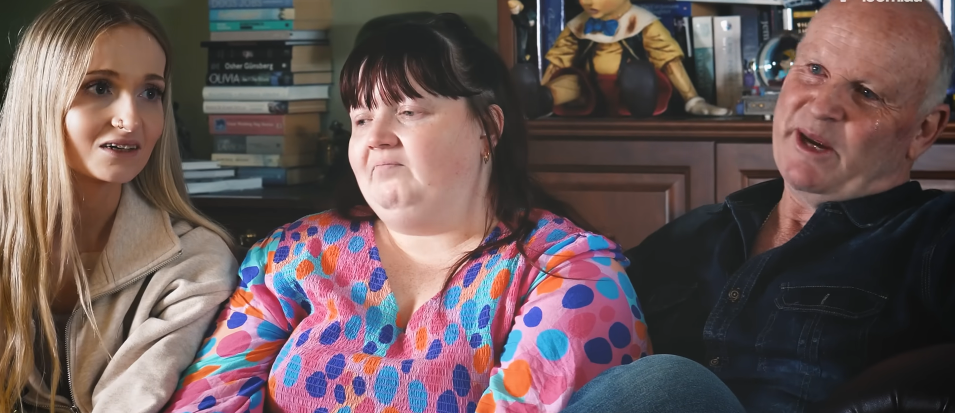
Annaliese, her sister, Vickie, and her father, Patrick Holland, during an interview dated November 16, 2025 | Source: Youtube/news.com.au
There were times when he turned into anger at her doctors, as some of their decisions caused her too much pain. Yet Annie survived every impossible ordeal, something he admits he could never have endured himself.
Annie understands that her parents and sister are struggling with her VAD decision.
"Dad is still coming to terms with it, it's hard for all of them," she said, remembering a difficult conversation they had one night when she told him she had "had enough."
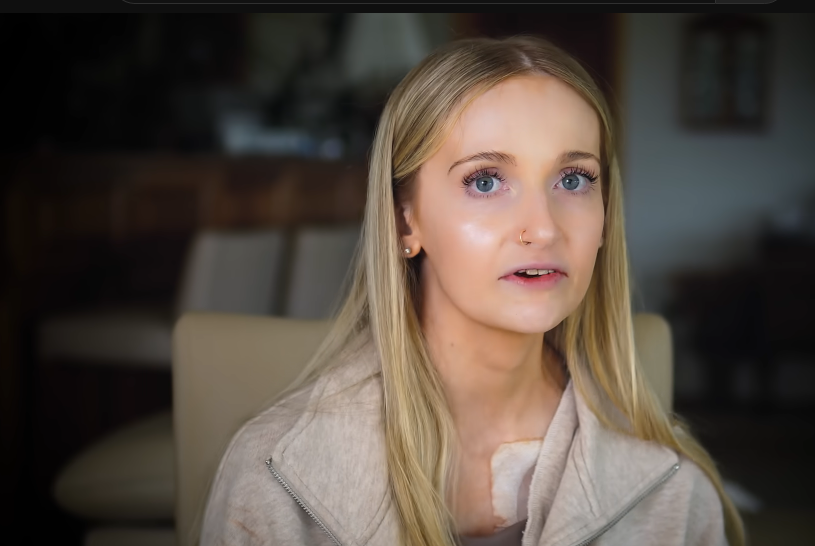
Annaliese Holland during an interview dated November 16, 2025 | Source: Youtube/news.com.au
Patrick asked if she was giving up, but Annie insisted it was not surrender. It was simply recognizing her limit, a limit she had been pushed past again and again.
Shortly after that emotional talk, she endured several horrific nights in the hospital, nights so dangerous that she had to be resuscitated.
At one agonizing moment, she looked at her father and begged, "Dad please let me go, I will not hate you if you let me go. If this happens again I don't want anything. Please know in my heart you are letting me go and saying 'no' to treatment … that's what I want."
And finally, Patrick understood.

Annaliese Holland at a hospital crying shown in a report dated November 16, 2025 | Source: Youtube/news.com.au
One of the criteria for VAD is having only six months to live, but Annie may not even reach that. There is no timeline for her condition. Anything can happen at any moment.
A Bucket List and a Fight to Live Before She Dies
Because of everything her body has endured, Annie cannot live the carefree life of a normal 25-year-old. Her days revolve around constant medication injections and a fragile web of tubes. One wrong move, one tiny equipment failure, and it could all be over.
Even with her nutrition supplied through TPN, Annie still suffers from gnawing stomach pains and bittersweet cravings every time she watches others eat.
And yet, through all the agony, Annie wears a brave face. She is not simply waiting for death; she is squeezing every drop of joy from the life she still has.
Now, she's planning to move out on her own, and she's counting down the days until she gets to see Lady Gaga in concert with her mother and sister.
She's also crafted a heartfelt bucket list.
One of her most unexpected wishes is to try on a wedding dress. Although she hasn't dated due to her sickness, it's an experience she hopes to try.
While other women her age are actually planning weddings and starting families, Annie has never even been to a wedding. Instead, she has stood at far too many funerals, delivering eulogies for young people who, like her, were taken too soon.
But right now, she's looking forward to renting her first apartment, a small slice of independence in a world that has taken so much from her. She knows she will still need support and won't be able to work, but the chance to live on her own means everything.
"I'm really, really excited about it because even if it's only for a short time, it is something I can tick off the list and at least experience," Annie said.
Although her condition might never have reached such a catastrophic point if it had been discovered sooner, Annie carries no bitterness in that sense. Instead, she hopes that by sharing her story, the next person will be diagnosed earlier and spared her suffering.
Still, as she stands at the edge of her life, she has wrestled with the meaning of her existence and the legacy she will leave behind. That is why she finally chose to speak publicly about her disease.
A Little Jealousy
Although Annie was reluctant to say it, she often felt jealous of older, sick people at hospitals because they got to live their lives.
She has missed so many milestones. In the beginning, it did not hurt as much because she truly believed she would get better one day and finally experience everything that waited beyond hospital walls.
But things became too difficult, which made her angry at the world because all her friends were moving on, and she was just there.
She once dreamed of a normal future for herself. Instead, she is now using her voice because two years ago, during yet another grueling hospital stay, Annie looked in the mirror and did not recognize the person staring back.
Her days had become a relentless and painful cycle of taking medications and simply trying to endure until bedtime. It was not living. So she told her doctors it was time for palliative care because she wanted whatever quality of life she had left.
"It kept me out of the hospital almost for a year last year, which is unheard of. They've managed to do everything at home, keep me with my family where I want to be, which is amazing," she explained.
The Friend Who Sparked This Decision
During the interview, Annie shared a tender hope for the afterlife. She dreams that Heaven has food — coconuts, pizzas, all the things she has never been able to taste.
And more than anything, she wants to eat a slice with her dear friend, Lily Thai, who died in June 2023 through VAD after battling Ehlers-Danlos Syndrome.
It was Lily who first opened Annie's eyes to that path. At the time, Annie never imagined she could go through something so final. There was always the chance that things might improve.
But when she became sicker and was asked to stand by Lily's side during her final moments, everything changed.
"I held her hand as they administered the euthanasia. And it was just one of the most beautiful things I'd ever been part of. She just closed her eyes, and it was so [expletive] peaceful," she revealed.
Her Biggest Fear About the End
One of the most powerful reasons she has chosen VAD is her terror of dying from starvation if her feeding line must be removed. She refuses to face any more agony.
Her doctors and nurses have seen every bit of her suffering and know this fear is real. Of course, she also had to meet with psychologists before approval.
She went through the full process, and three weeks later, she finally received the news she had barely dared to hope for. "I think it's so weird to be happy, but I was so happy when I found out I was approved, I was crying," Annie recalled.
She also shared that choosing VAD means something unexpected and precious. People can tell her all the kind things they would normally save for her funeral, but she will be alive to hear them.
For now, she hopes she can die at home. But she worries deeply about the impact on her family.
"This is a place where they remember me being me. I would hate for them to have a place where they're always reminded of that moment and there is no escape for them," she expressed.
She will not put more pain on them if she can help it. She has weighed this controversial decision from every angle.
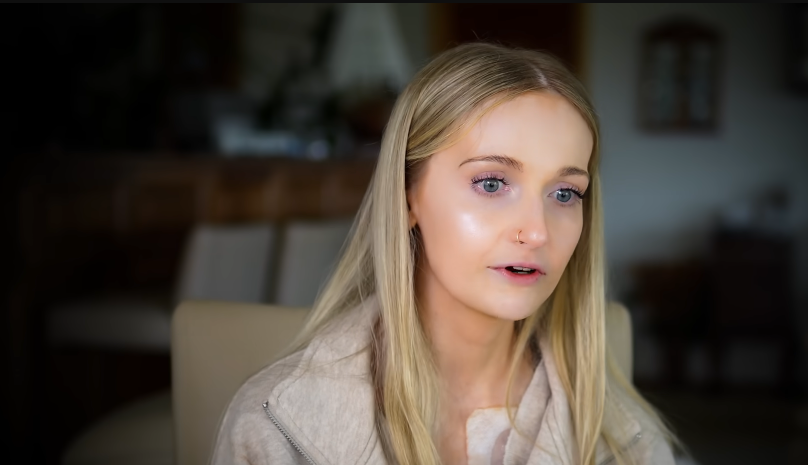
Annaliese Holland during an interview dated November 16, 2025 | Source: Youtube/news.com.au
Her hope is that her story will finally push people to see VAD differently, because Annie believes death, and the choices around it, should not be taboo.
Although she has lived through many beautiful moments, she has endured things no one else could truly imagine.
"At the end of the day it's my body, I've spent 12 plus years being part of a system, a number, not a person, and the pain inflicted on me … it's my turn, it's my choice, nobody else's and that's a conversation we all should be able to have," Annie said.
If you or someone you know is considering suicide, please contact the National Suicide Prevention Lifeline at 1-800-273-TALK (8255), text "help” to the Crisis Text Line at 741-741, or go to suicidepreventionlifeline.org.
The information in this article is not intended or implied to be a substitute for professional medical advice, diagnosis or treatment. All content, including text, and images contained on ondoho.com, or available through ondoho.com is for general information purposes only. ondoho.com does not take responsibility for any action taken as a result of reading this article. Before undertaking any course of treatment please consult with your healthcare provider.
The National Suicide Prevention Lifeline is 1-800-273-8255. Other international suicide helplines can be found at befrienders.org.
